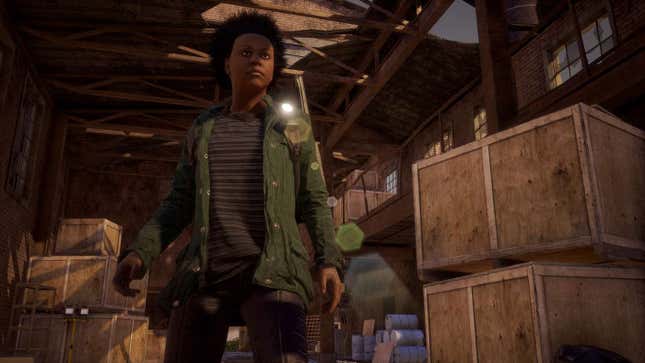
I really wanted to like State of Decay 2, last year’s zombie survival game about fending off the undead and also building a community of survivors. Unfortunately, I wasn’t able to connect with it the way I wanted to, and I could never connect with the community I was working so hard to form.
I thought I knew what it would take for State of Decay 2 to win me back: just a little more story. A little more holding together its array of systems to mind and maintain, a few more authored threads tugging me out into the world, giving me motivation to do things beyond the day-to-day housework of keeping my community of survivors afloat.
State of Decay 2: Heartland gives me what I was asking for. The new expansion brings players back to Trumbull Valley, the setting of the first game, and lets them choose between two different sets of characters with very clear reasons for going back there. Larisse and her Aunt Fi are on the hunt for Larisse’s father, Mickey Wilkerson. Quincy is an ex-con, his partner Helena is a former cop, and they’re looking for an old associate.
Each narrative hook is pretty simple, with strong ties to the story of the first State of Decay. It does what I hoped a little more story would do for State of Decay 2: provide a little more of a push to go out in the world, brave the zombie masses, build a hardier community of survivors. It’s also not enough, I’ve learned. I think my problem is that I just don’t like State of Decay 2.
This is not to say the tweaks made to Heartland are bad ones. Every change the expansion makes is for the better: Recruitable survivors are no longer procedurally generated, every zombie has the blood plague, and you’ve only got one large base to work with that’s unlocked within moments of starting. And each story (Larisse’s or Quincy’s, depending on which you choose) has an ending, which is nice for anyone left listless by State of Decay 2's perpetual open-endedness. All together, these tweaks work to make State of Decay 2 a little more cohesive, a little more dangerous, and a little more thoughtful. It’s just still so extremely dry.
You spend missions in Heartland doing much of what you did in the base game—going out on supply runs, managing your base, recruiting new survivors, making sure everyone is fed and well-rested and not infected with a horrible disease. There are always tasks to do, and Heartland is eager to give you more, with a healthy side of super-zombies dedicated to making those tasks very difficult. Even with the loose stories attached to your starting characters, it just feels like wheel-spinning after a while, as the systems shunt you into one loop after another, each no more nor less compelling than the last.
I’m not averse to games that are purely systemic, and the ideas behind the systems in State of Decay 2 are still good ones. Surviving the zombie apocalypse alone is nigh impossible, but building a community to withstand it takes hard work. But even with its expansion, State of Decay 2 feels built in a way that makes it feel too committed to its own processes for players to really get their hands dirty. It’s not a game for hatching plans or expressing much creativity. It’s there to put you to work. Despite adding the one thing I wanted for State of Decay 2, Heartland only makes that clearer.